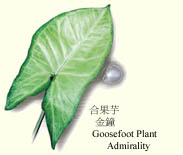CFC Replacement
| The depletion of the ozone layer, which absorbs large proportions of
harmful ultraviolet radiation from the sun, is being viewed with concern around the world.
As a result, with international commitment under the Montreal Protocol of 1987 and Hong
Kong's own commitment under the Ozone Layer Protection Ordinance of 1989, ozone depleting
substances would be gradually banned from further production. |
 |
Chlorofluorocarbons (CFC), Hydrochlorofluorocarbons (HCFC) and halons have been
identified as major ozone depleting substances and active programmes are in place to phase
out or replace existing installations that use these substances. Production of halon,
which is mainly used for fire extinguishing purposes, has been banned since 1994 while the
production of CFCs, mainly used in air-conditioning and refrigeration plants was banned in
1996. HCFCs, with similar applications to CFCs but used more often in smaller
air-conditioners will be totally banned in 2030.
 |
Being responsible for the operation and maintenance of air-conditioning
and refrigeration plants and fire service installations for the Government and various
public bodies, we manage over 2,000 air-conditioning installations apart from the
air-conditioning and cooling systems in Government vehicles. We have been operating a CFC
replacement programme since 1994. |
Achievements to 31 December 1999 include:
 Retrofitting existing plants to enable the use of new
refrigerant and replacement work for 120 installations at 30 sites, 94% of which have been
completed. New refrigerants used include R134a, which cause much lower levels of global
warming and a zero effect on ozone depletion. Retrofitting existing plants to enable the use of new
refrigerant and replacement work for 120 installations at 30 sites, 94% of which have been
completed. New refrigerants used include R134a, which cause much lower levels of global
warming and a zero effect on ozone depletion.
 Replacement of 159 CFC cold room units at 52 sites has been
completed. Replacement of 159 CFC cold room units at 52 sites has been
completed.
 Replacement of 314 halon installations at 80 sites has been
completed. The halon has been replaced by the more environmentally friendly FM200. Replacement of 314 halon installations at 80 sites has been
completed. The halon has been replaced by the more environmentally friendly FM200.
| During this replacement programme, over 1,000 tonnes of ozone depleting
refrigerant and halon had to be disposed of properly. As legislation prevents the release
of these substances into the atmosphere, the refrigerants are either refilled into other
systems using the same material, though this is becoming increasingly rare as the systems
are being phased out, or sealed in containers for disposal through licensed contractors.
The refrigerants are subsequently burned, thus causing the least harm to the environment. |
 |
|


